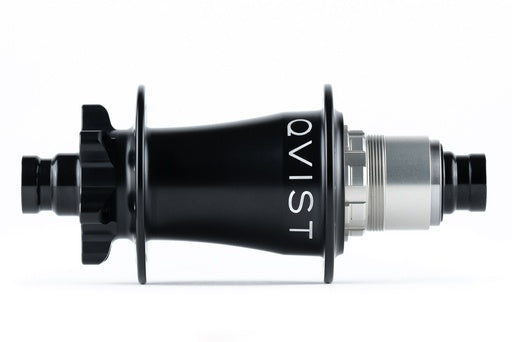QVIST Duo-Boost Classic 6 Bolt Rear Hub
Until now, small engagement angles (<5°) were only possible with pawl freehubs and roller / sprag clutches. While fine pawls lack robustness, roller and sprag clutches are soundless and heavy. The patent-pending DOUBLE RATCHET SYSTEM provides fast engagement with the proven and robust ratchet technology as well as a unique stereo freehub sound - without breaking the scale.
Conventional ratchet freehub systems consist of two ratchet partners and all ratchet teeth engage simultaneously. As a result, the forces are distributed evenly over a large contact area, making the ratchet system of the utmost reliability. Since there is only space for a certain number of teeth on the ratchets, the number of engagement points is limited.
- Regular price
- $1,100.00
- Sale price
- $1,100.00
- Regular price
-
Key Features
-

DOUBLE RATCHET SYSTEM
Until now, small engagement angles (<5°) were only possible with pawl freehubs and roller / sprag clutches. While fine pawls lack robustness, roller and sprag clutches are soundless and heavy. The patent-pending DOUBLE RATCHET SYSTEM provides fast engagement with the proven and robust ratchet technology as well as a unique stereo freehub sound - without breaking the scale. Conventional ratchet freehub systems consist of two ratchet partners and all ratchet teeth engage simultaneously.
-

TWICE THE FUN
The DOUBLE RATCHET SYSTEM features three ratchet rings that engage alternately. Thus, the number of engagement points is doubled without compromising reliability. Only one side of the ratchet system is engaged at a time. Our oversized ratchet rings have an audiophile resolution of 60 teeth and the DOUBLE RATCHET SYSTEM thus 120 points of engagement and an engagement angle of 3°. The freehub shaft transmits the driving force via the outer ratchet rings to the double-sided center ratchet ring and therewith to the hub body. By moving the mechanism inside the hub body, behind the large hub body bearing, the hub as a whole becomes stiffer and bearing life is significantly increased due to a more even load distribution.








